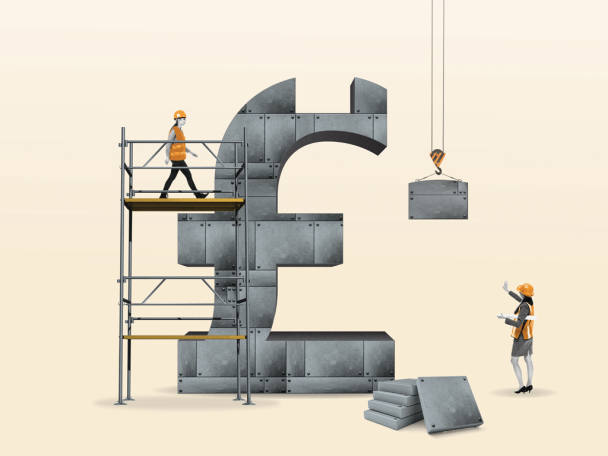- The niche ETFs from this year's list
- Why we dropped some of the funds from last year's selection
Niche ETFs
Commodities and precious metals (2 ETFs)
ETFs remain a cheap, straightforward means of exposure to commodities, a potentially lucrative area amid talk of a supercycle. This year we have removed one fund we viewed as fairly dispensable to make room for an extra satellite bond ETF.
Invesco Bloomberg Commodity UCITS ETF (CMOP)
The panel remained broadly supportive of this ETF, which has racked up substantial gains in the past year. It provides broad exposure to commodities, from oil and gas to grains, industrial metals and livestock. But if you hold a gold exchange traded commodity (ETC) there could be some overlap because Invesco Bloomberg Commodity UCITS ETF recently had a 12.5 per cent exposure to the yellow metal. And you are likely to have exposure, albeit less directly, to sectors such as energy from certain equity funds, particularly those focused on markets such as the UK.
This ETF looks competitive both in terms of size and price, although its fees come in two components. It has a 0.19 per cent management fee and a 0.15 per cent swap fee.
Invesco Physical Gold ETC (SGLP)
Providers of gold ETCs have been engaged in a fierce price war over the past year, meaning that your gold exposure is likely to be cheaper than in the past. This ETC's fee has fallen from 0.19 per cent when we updated the IC Top 50 ETFs this time last year to 0.15 per cent. This brings it down to the same price as an iShares rival. One panelist noted that the iShares fund has a slightly tighter spread, but this in itself may not justify a switch. While both ETCs are good products, Invesco Physical Gold ETC remains highly competitive both in terms of cost and liquidity.
Dropped
Invesco Physical Silver ETC (SSLV)
With silver prices tending to follow a similar trajectory to gold, one panelist argued that it may be “overkill” to have both this and a gold fund on the list. So while we have no real misgivings about this particular ETC, it seemed the obvious choice to drop to make space for another bond ETF. But Invesco Physical Silver ETC remains a cheap, liquid option if you want direct exposure to silver.
Thematic (4 ETFs)
Thematic ETFs have risen to prominence in the past year, both in terms of investor demand and supply of new products. They took in a net €9.5bn (£8.17bn) in Europe in 2020, according to fund research company Morningstar, with more than half of these inflows going into energy transition and connectivity-themed funds. A record 17 thematic ETFs launched in the same year and have continued to proliferate in 2021.
Our panelists, like many investors, tend to find the different thematic funds on offer novel and exciting. While we understand the buzz around these products, we don't want to cut back on the useful options elsewhere in the IC Top 50 ETFs so that we can increase the number of thematic funds. So we continue to keep this part of the list fairly short, but we are working on a follow-up feature outlining the thematic ETFs that excited our panel the most.
Investors should note that thematic ETFs come with some serious drawbacks. Not all of them target a theme in the way that you might expect, while there have been some high-profile index composition issues in the past year. Thematic ETFs require extensive due diligence before you invest in them and – arguably – much more frequent monitoring than your average equity tracker. Others worry that thematics tend to target a trend or sector just as it is hitting a peak, setting investors up for a rough ride.
We have stuck with the four thematic ETFs in last year's list, one of which is now fairly controversial, and suggest doing deep research before buying any of these or other thematic funds.
iShares Automation & Robotics UCITS ETF (RBTX)
The expert panel generally remained positive on this ETF, which invests in automation and robotics companies in both emerging and developed markets. It has a fairly broad spread of investments, with 133 holdings in late June, from software company Splunk (US:SPLK) – its largest holding – to medical technology company Intuitive Surgical (US:ISRG). The fund has built up a good level of scale and charges a competitive 0.4 per cent fee.
Thematic funds' holdings can have overlap with those of more conventional equity funds – often in areas such as US tech. iShares Automation & Robotics UCITS ETF had 57.7 per cent of its assets in the US, with Apple among its holdings, in late June. Its second-biggest regional allocation was a 21.2 per cent weighting to Japan.
As thematic funds proliferate, there are increasing options with different pros and cons. Charles Stanley’s Lynn Hutchinson preferred an L&G rival to this fund, citing the due diligence the fund provider conducts on its holdings.
iShares Ageing Population UCITS ETF (AGES)
Last year we were concerned that this fund may be in for a rocky ride as we moved through the pandemic, given its chunky exposure to the likes of financials. Instead it has prospered, posting double-digit returns in the past year. This may be due to its financials holdings riding the cyclical rebound or healthcare stocks proving resilient.
This fund continues to appeal in terms of the theme it targets, its 0.4 per cent charge and much greater size since we wrote about it last year. But as the drivers of its performance illustrate, you need to look carefully at its fairly mixed portfolio. Around half of its assets are in healthcare stocks but a third are in financials – not necessarily a sector you would associate with this theme. The consumer discretionary industry, its third-biggest sector allocation, represented around 10 per cent of its assets in late June. Even though iShares Ageing Population UCITS ETF's roughly 350 holdings in a spread of sectors may seem like good diversification, it is still important to understand what this fund holds.
iShares Global Clean Energy UCITS ETF (INRG)
Having been an easy choice to keep in the Top 50 ETFs last year, this has since become the most controversial fund on the list by some stretch. The billions that poured into iShares Global Clean Energy UCITS ETF and its non-UCITS equivalent caused serious concerns because it led to them holding big stakes in certain small and mid-cap stocks. This led to a major overhaul of the index the funds track, including an increase in the number of stocks these include from around 30 to a target of 100. Performance has also been rocky: iShares Global Clean Energy UCITS ETF made enormous gains in 2020 but was sitting on a year-to-date loss of nearly 20 per cent, as of 24 June.
Unsurprisingly, this fund has divided the expert panel's opinion, with some members keen to drop it and others fairly confident in its new structure over the longer term. As we discussed in iShares Global Clean Energy UCITS ETF: stick or twist? (IC, 21.05.21), on balance we have taken the latter view, arguing that the changes made to the index the fund tracks should improve its liquidity and, to an extent, its diversification. It still works as a concentrated play on certain stocks associated with clean energy, with a big allocation to its top holdings.
Take time to understand what this fund holds and how it differs from its rivals. You might take issue because it now has a greater focus on utilities and less exposure to small and mid-cap stocks. And some consider that clean energy share prices still look frothy while the ETF’s fee is high at 0.65 per cent, given its level of assets. But clean energy valuations aside, we view this as a well-structured play on the clean energy theme over the longer term.
iShares Digitalisation UCITS ETF (DGIT)
Both the theme behind this fund and its performance continue to hold water. Although a long way from the big returns made in areas such as clean energy, this ETF posted a highly impressive 36.8 per cent sterling total return last year. It was up by nearly 10 per cent between the start of this year and 24 June in sterling terms, albeit with some big ups and downs along the way.
This fund invests in developed and emerging market companies that generate significant revenues from digitally focused services. It has a reasonable 0.4 per cent charge and had more than 200 holdings as of late June.
If you are thinking of investing in this ETF, look at what it holds and how it compares with funds targeting similar trends. iShares Digitalisation UCITS ETF may have a degree of overlap with other funds, including US equity and tech funds. It may have a good level of correlation with such funds, as well as holdings in common.
Discover our selection for 2021 here:
Also take some time to listen in to our podcast on ETFs:








